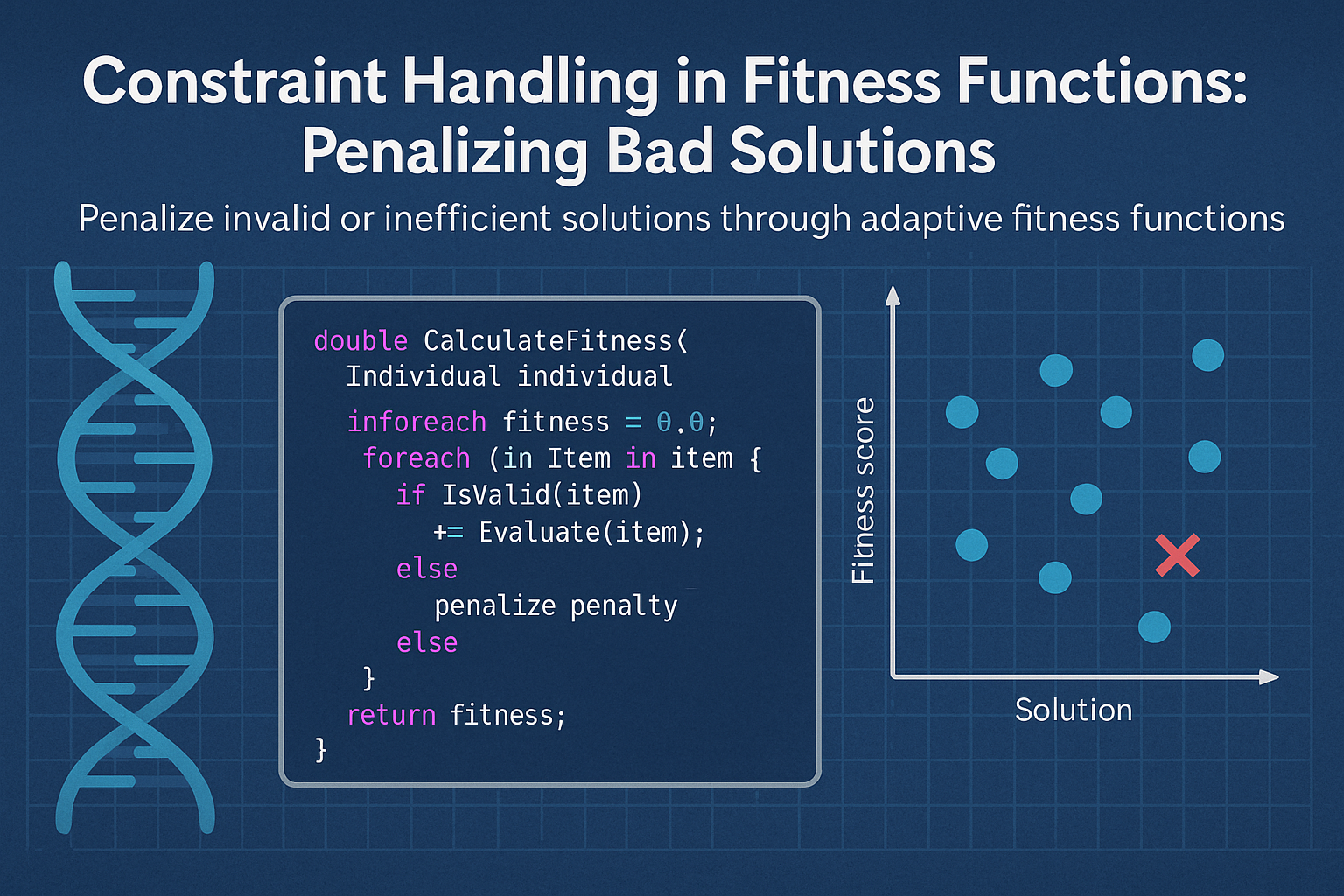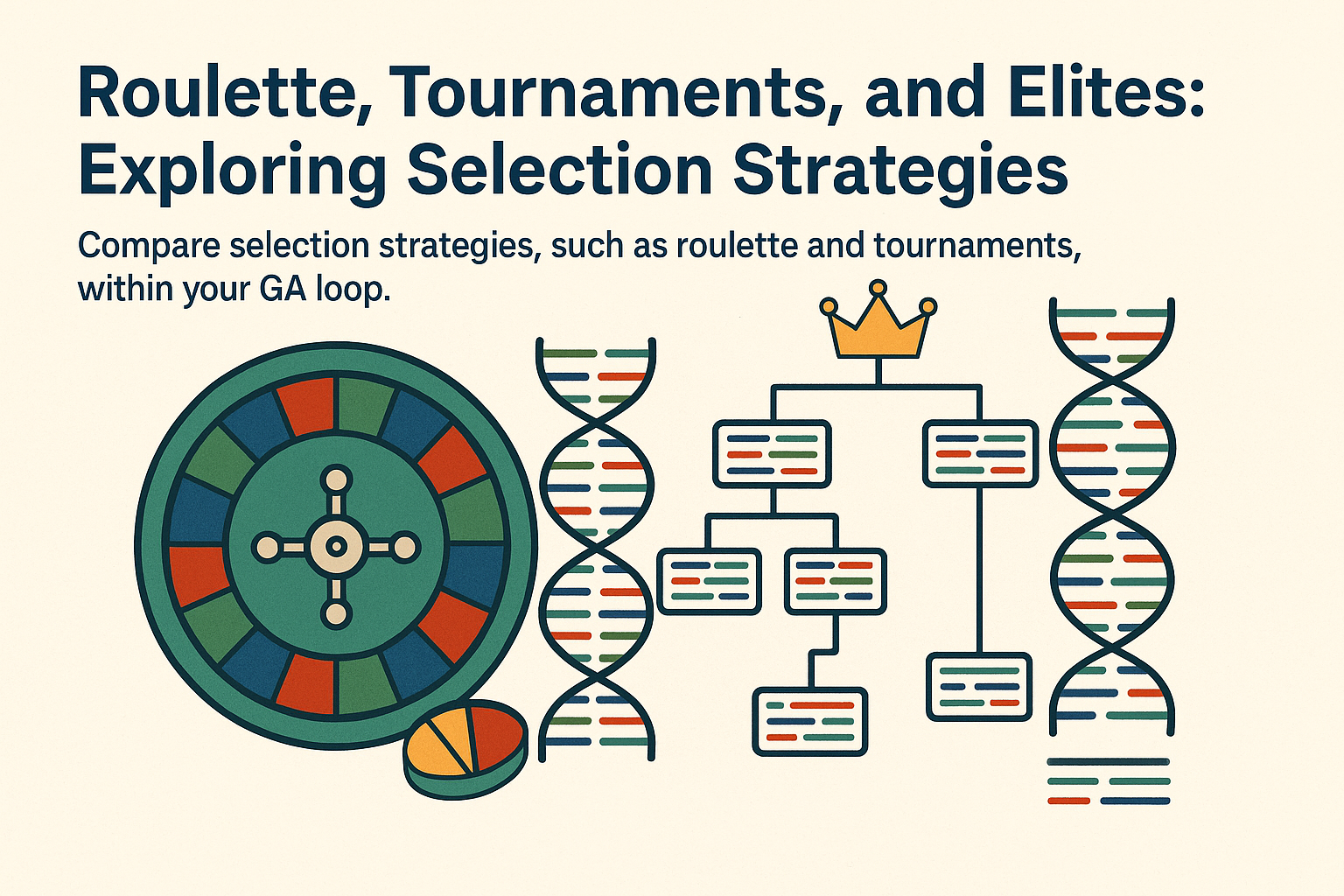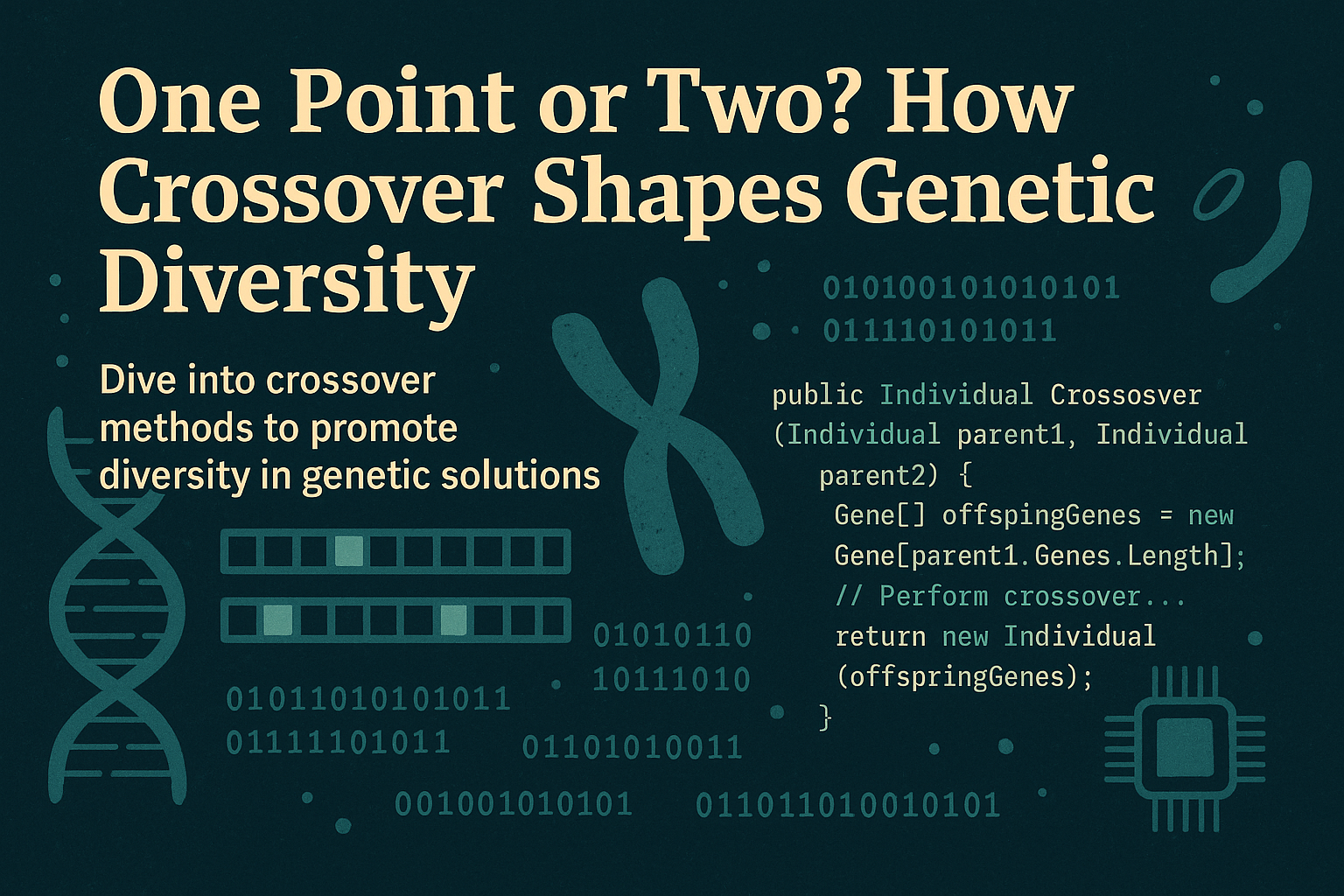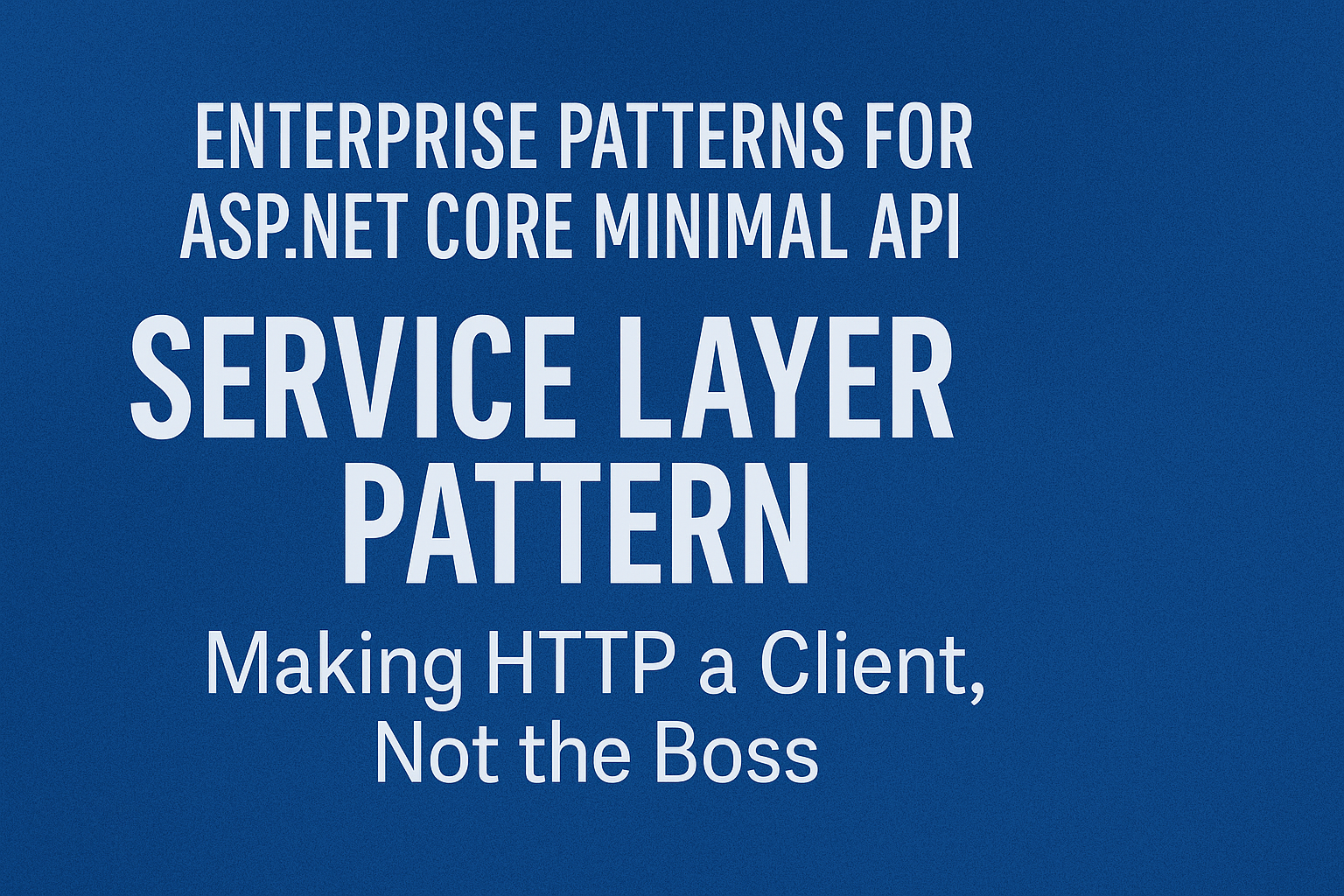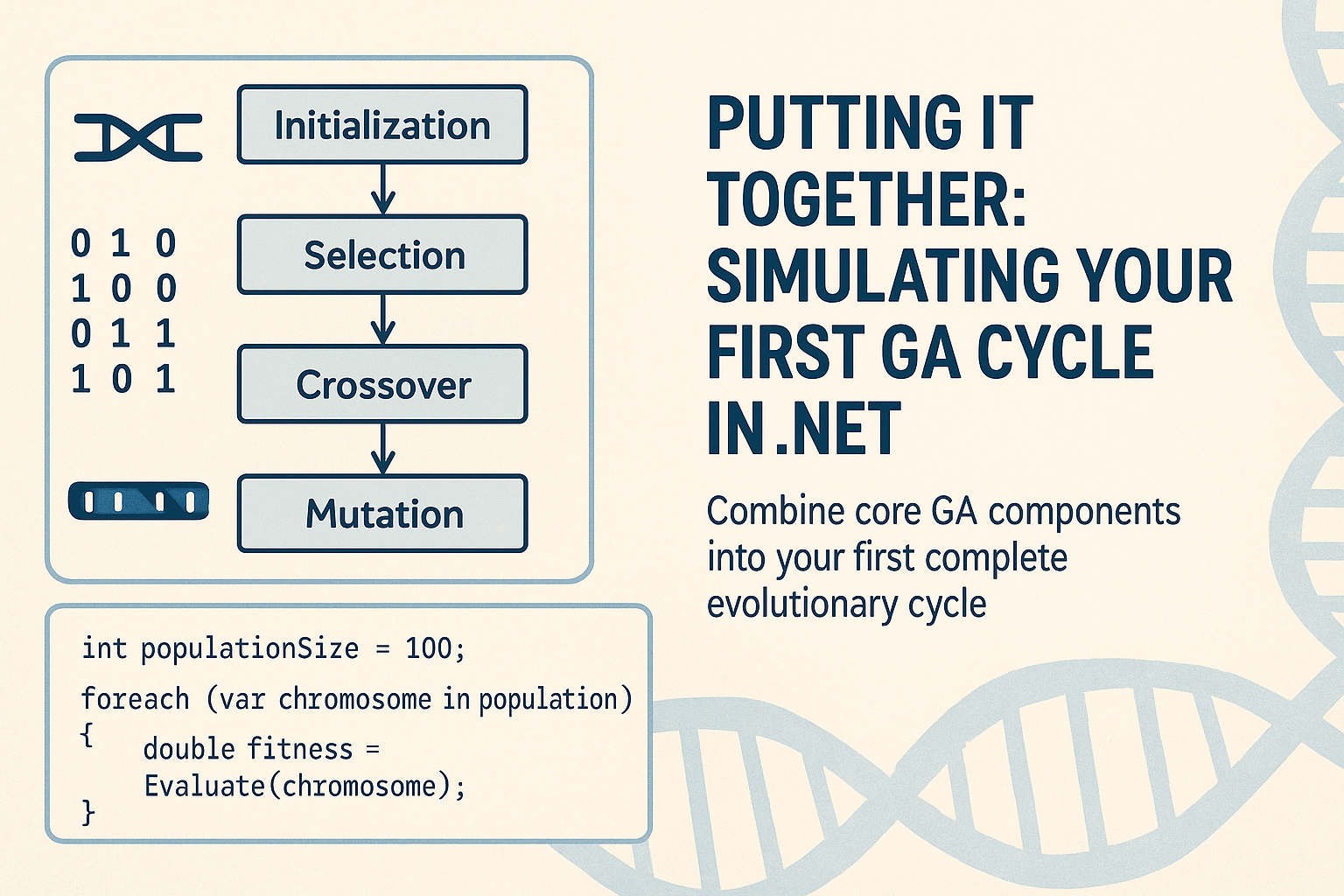
Day 7: Putting It Together: Simulating Your First Genetic Algorthm Cycle in .NET
- Chris Woodruff
- June 10, 2025
- Genetic Algorithms
- .NET, ai, C#, dotnet, genetic algorithms, programming
- 0 Comments
By now, you’ve learned the foundational components of genetic algorithms: chromosomes, genes, fitness functions, mutation, crossover, and selection. Today, it’s time to bring those elements together and run your first complete GA cycle using C# and .NET.
This post walks you through the structure of a single evolutionary loop, initialization, evaluation, selection, reproduction, and mutation, so you can simulate a working genetic algorithm and evolve real solutions.
Recap: The Genetic Algorithm Workflow
Each generation in a genetic algorithm follows this pattern:
- Initialize a population of chromosomes
- Evaluate their fitness
- Select parents based on fitness
- Crossover to produce offspring
- Mutate offspring to introduce variation
- Replace the old population with a new generation
- Repeat for a fixed number of generations or until a solution is found
Setting Up the Population
Let’s start with a simple goal: evolve a population of strings to match the phrase "HELLO WORLD".
We’ll use a basic Chromosome class like the one we’ve developed in previous posts.
Initializing the Population
const string target = "HELLO WORLD";
const int populationSize = 100;
const int generations = 1000;
const double mutationRate = 0.01;
var population = new List<Chromosome>();
for (int i = 0; i < populationSize; i++)
{
population.Add(new Chromosome(target.Length));
}
Evaluating Fitness
Each chromosome receives a fitness score based on its similarity to the target.
foreach (var chromosome in population)
{
chromosome.FitnessScore = chromosome.GetFitness(target);
}
Make sure FitnessScore is a public property or field in your Chromosome class.
Selection and Reproduction
We’ll use elitism and tournament selection to build the next generation.
List<Chromosome> Evolve(List<Chromosome> currentPopulation)
{
var nextGeneration = new List<Chromosome>();
// Elitism: preserve the top 2
var elites = currentPopulation.OrderByDescending(c => c.FitnessScore).Take(2).ToList();
nextGeneration.AddRange(elites);
while (nextGeneration.Count < currentPopulation.Count)
{
var parent1 = TournamentSelection(currentPopulation, 5);
var parent2 = TournamentSelection(currentPopulation, 5);
var child = parent1.Crossover(parent2);
child.Mutate(mutationRate);
nextGeneration.Add(child);
}
return nextGeneration;
}
Running the Full Evolution Cycle
Now we’ll loop over multiple generations and evolve toward the target.
for (int gen = 0; gen < generations; gen++)
{
foreach (var chromosome in population)
{
chromosome.FitnessScore = chromosome.GetFitness(target);
}
var best = population.OrderByDescending(c => c.FitnessScore).First();
Console.WriteLine($"Generation {gen}: {best.GetPhrase()} (Fitness: {best.FitnessScore})");
if (best.FitnessScore == target.Length)
{
Console.WriteLine("Solution found!");
break;
}
population = Evolve(population);
}
Example Output
Generation 0: KELXO ZRLAQ (Fitness: 2) Generation 50: HELTO WORHD (Fitness: 10) Generation 104: HELLO WORLD (Fitness: 11) Solution found!
The algorithm gradually evolves closer to the target string as the population improves.
Wrap-Up
You’ve now built a full genetic algorithm loop in C#. It may be simple, but it models all the essential behaviors of evolution: variation, selection, and survival of the fittest. From this foundation, you can scale the algorithm to solve more advanced problems, such as route planning, resource scheduling, game AI, and more.
Next week, we’ll explore crossover techniques in more detail and look at how different strategies influence genetic diversity.
Your evolutionary engine is running. Now it’s time to refine how traits are passed along.
You can find the code demos for the GA series at https://github.com/cwoodruff/genetic-algorithms-blog-series

